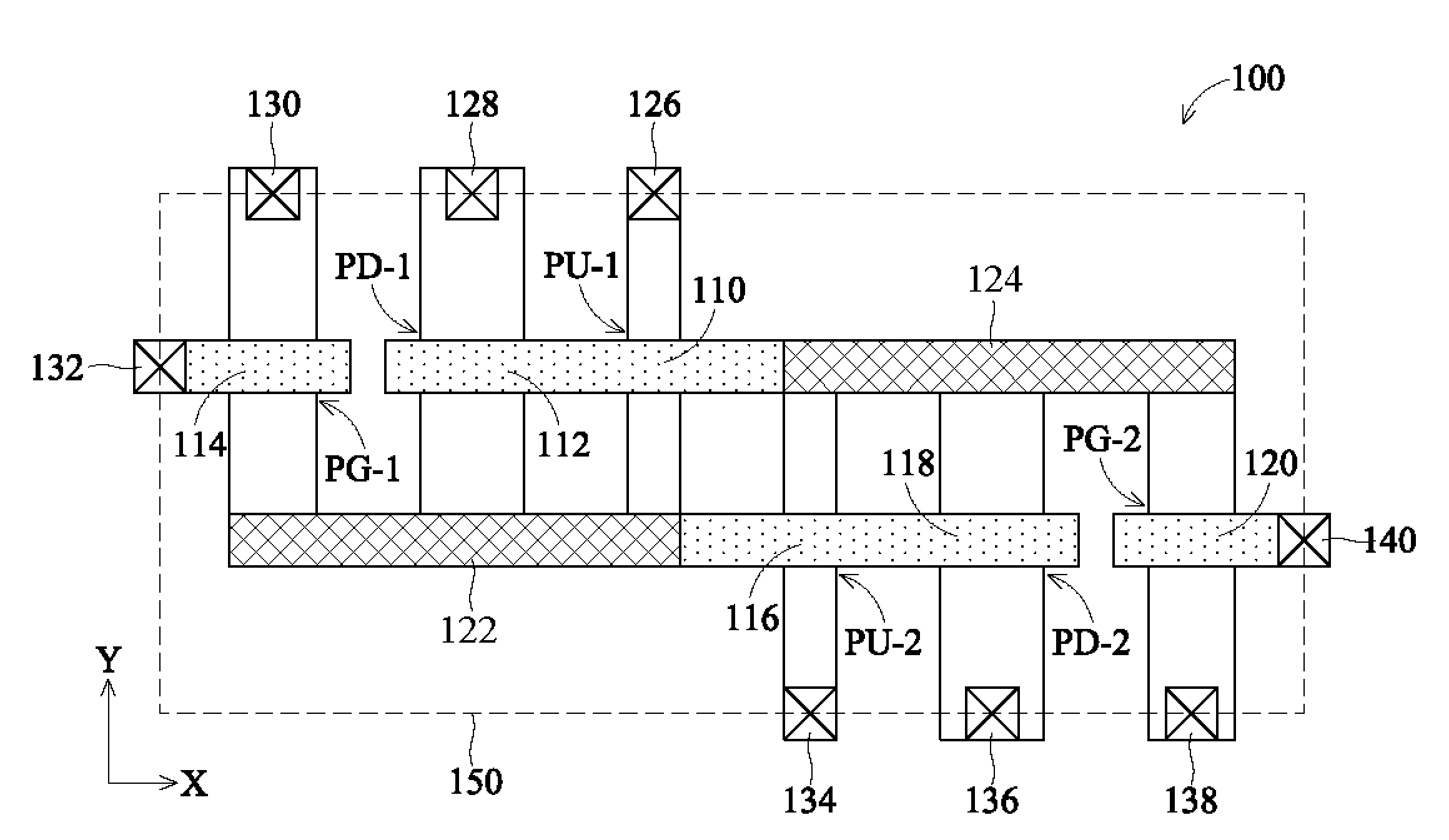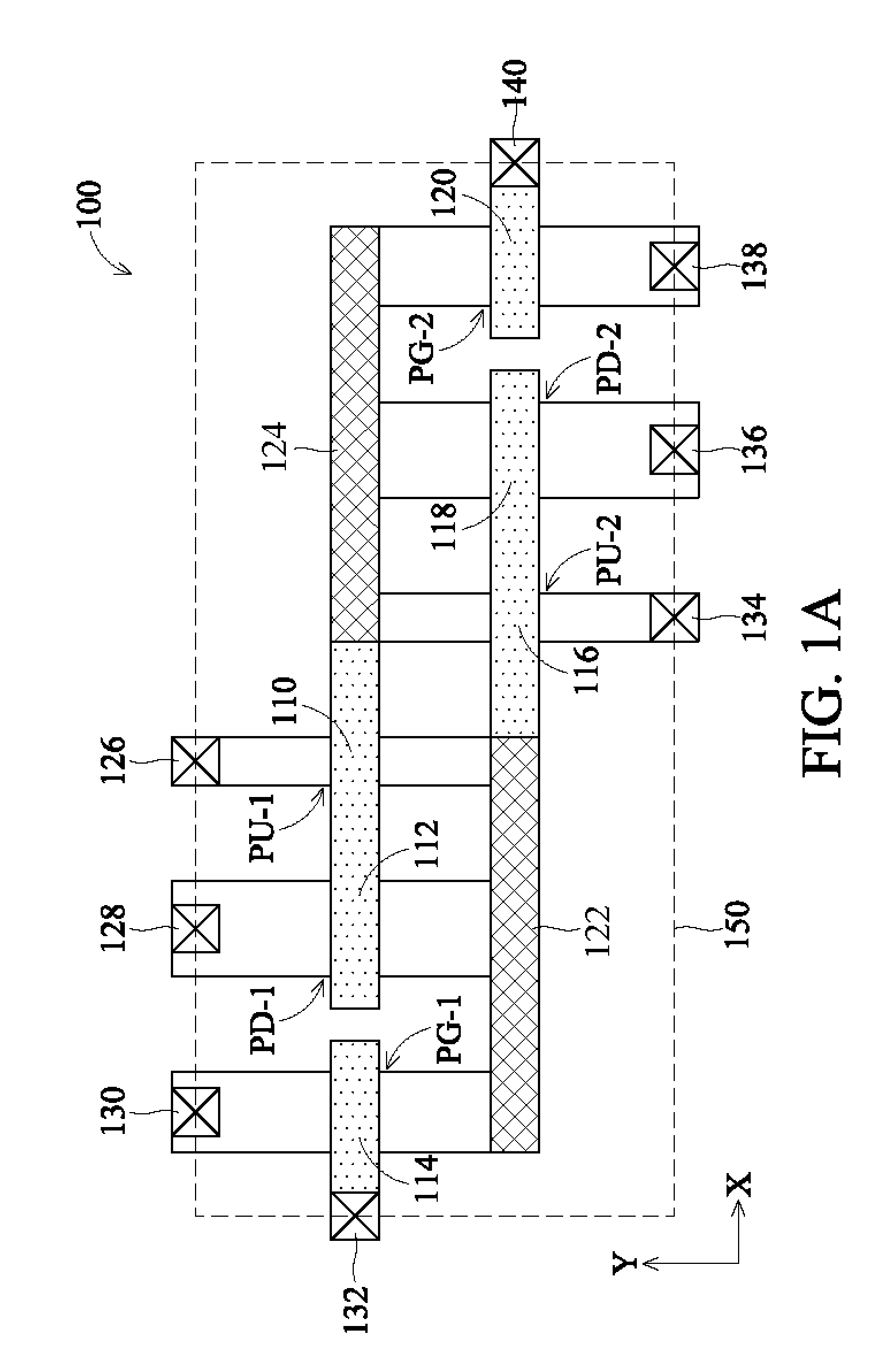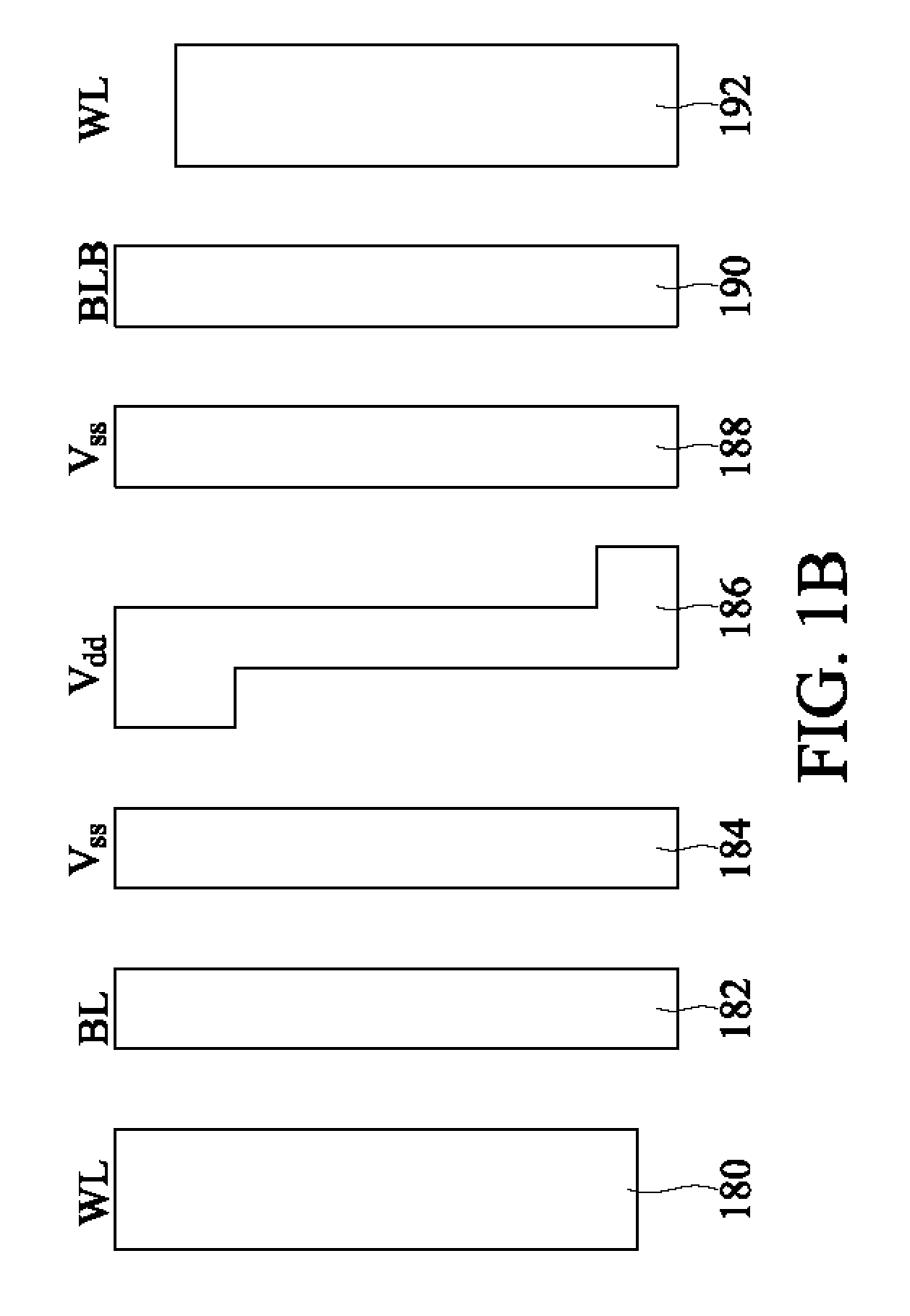Static random access memory (SRAM) cell and method for forming same
a random access memory and cell technology, applied in the field of static random access memory (sram) cells, can solve the problems of preventing the use of sram in devices that require very small sram cells, affecting the use of fin field effect transistors (finfets) in the sram, and the processing requirements of conventional sram cells
- Summary
- Abstract
- Description
- Claims
- Application Information
AI Technical Summary
Benefits of technology
Problems solved by technology
Method used
Image
Examples
Embodiment Construction
The making and using of the present embodiments are discussed in detail below. It should be appreciated, however, that the present invention provides many applicable inventive concepts that can be embodied in a wide variety of specific contexts. The specific embodiments discussed are merely illustrative of specific ways to make and use the invention, and do not limit the scope of the invention.
The present invention will be described with respect to embodiments in a specific context, namely a 6T SRAM layout and a dual port SRAM layout. The invention may also be applied, however, to any kind of SRAM cell layout, including 10T SRAM layouts.
FIG. 1A shows a layout of a 6T SRAM cell 100 in accordance with embodiments of the invention. The memory cell layout 100 comprises a first pass-gate transistor PG-1, a second pass-gate transistor PG-2, a first pull-down transistor PD-1, a second pull-down transistor PD-2, a first pull-up transistor PU-1, and a second pull-up transistor PU-2 disposed ...
PUM
 Login to View More
Login to View More Abstract
Description
Claims
Application Information
 Login to View More
Login to View More - R&D
- Intellectual Property
- Life Sciences
- Materials
- Tech Scout
- Unparalleled Data Quality
- Higher Quality Content
- 60% Fewer Hallucinations
Browse by: Latest US Patents, China's latest patents, Technical Efficacy Thesaurus, Application Domain, Technology Topic, Popular Technical Reports.
© 2025 PatSnap. All rights reserved.Legal|Privacy policy|Modern Slavery Act Transparency Statement|Sitemap|About US| Contact US: help@patsnap.com



